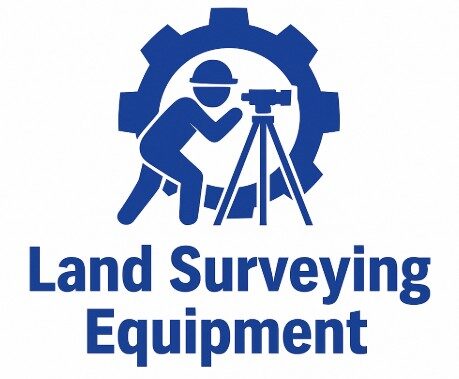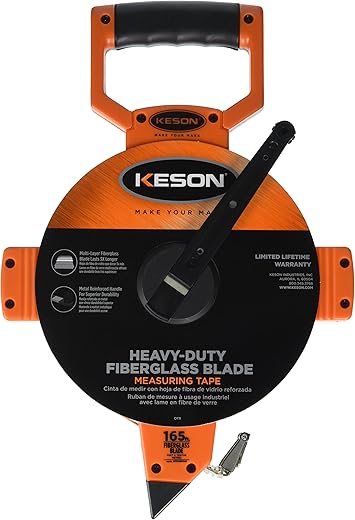Top 10 Land Surveying Books We Recommend
Ready to Measure Up? Discover the Books That Will Elevate Your Surveying Skills!
Ever found yourself lost in a field of numbers and legal jargon? We’ve all been there, staring at a plot plan wondering if we should call a lawyer or a math tutor! Fear not, because we’re diving into the top 10 land surveying books that will turn you from a confused novice into a surveying superstar.
Whether you’re a seasoned pro or just starting out, these books are packed with valuable insights and practical knowledge. From mastering boundary laws to cracking the code of surveying mathematics, we’ve got you covered. Let’s explore these essential reads that promise to make your surveying journey smoother and more enjoyable!
Our Top Picks










Brown's Boundary Control and Legal Principles
This book is a comprehensive resource for understanding the legal principles of boundary surveying, making it invaluable for professionals in the field.
Overview
Brown's Boundary Control and Legal Principles is a classic text that delves into the legal aspects of land surveying. This revised edition reflects the latest changes in boundary law and provides insights into the historical context of boundary determinations.
Key Features
Benefits
This book is essential for anyone involved in land management, use, or development. It provides a solid foundation in boundary law, equipping professionals with the knowledge needed to navigate complex legal situations.
PPI Surveyor Reference Manual, 7th Edition
This comprehensive manual is a must-have for anyone preparing for the FS exam. It covers all essential topics in a clear and detailed manner, making it an invaluable resource for both students and professionals.
Overview
The PPI Surveyor Reference Manual, 7th Edition is an essential resource for anyone looking to pass the NCEES Fundamentals of Surveying (FS) Exam. Authored by George Cole, this manual is designed to provide a thorough review of all topics relevant to the exam, ensuring that candidates are well-prepared on test day.
Key Features
Benefits
This manual not only serves as a study guide for the FS exam but also acts as a reference throughout a surveying career. Many users have praised its clarity and depth of information, making it a go-to resource for exam preparation and ongoing education in the field of surveying.
Land Development Handbook, Fourth Edition
This handbook covers the entire land development process, making it an indispensable guide for professionals in the field.
Overview
The Land Development Handbook, Fourth Edition is a detailed guide that covers all aspects of land development, from feasibility studies to permitting. This comprehensive resource is invaluable for professionals in civil engineering, land planning, and development.
Key Features
Benefits
This handbook serves as an essential reference for anyone involved in land development projects. Its comprehensive nature ensures that users are well-equipped to handle the complexities of development, making it a must-have for professionals in the field.
GPS and GNSS for Land Surveyors
This book provides a solid introduction to GPS and GNSS systems, making complex concepts accessible for both beginners and seasoned professionals in surveying.
Overview
GPS and GNSS for Land Surveyors, Fifth Edition is a crucial resource for anyone looking to understand the advancements in satellite navigation technology. Written by an experienced land surveyor, this book simplifies complex concepts, making them accessible to a broad audience.
Key Features
Benefits
This book is ideal for both students and professionals. It provides a practical approach to understanding GPS and GNSS technology, making it a valuable tool for those in civil engineering, geomatic engineering, and surveying. The accessible format encourages readers to engage with the material and apply their knowledge in real-world scenarios.
Manual of Surveying Instructions
This manual provides essential guidelines for conducting cadastral surveys in the U.S., making it a vital resource for surveyors and land managers.
Overview
The Manual of Surveying Instructions serves as a key resource for understanding the legal and procedural aspects of cadastral surveys in the United States. It is an essential guide for surveyors working within federal land systems.
Key Features
Benefits
This manual is indispensable for surveyors involved in public land surveys. It provides the necessary legal context and procedural instructions to ensure accurate and compliant survey practices.
Surveying Fundamentals and Practices
This textbook provides a balanced approach to modern surveying techniques while reinforcing traditional fundamentals, making it perfect for students and professionals alike.
Overview
Surveying Fundamentals and Practices is a comprehensive textbook designed to provide students with a solid foundation in both traditional and contemporary surveying techniques. This seventh edition is updated to reflect the latest advancements in surveying technology and practices.
Key Features
Benefits
This textbook is ideal for students in surveying programs and professionals looking to refresh their knowledge. Its comprehensive approach ensures that readers not only learn the necessary skills but also understand how to apply them effectively in their careers.
Principles and Practice of Surveying Review
This review book offers targeted questions and answers, making it a practical resource for preparing for the NCEES surveying exams.
Overview
Principles and Practice of Surveying NCEES Examination Review Questions and Answers is specifically designed to aid surveyors in preparing for the NCEES closed-book exam. This resource focuses on legal principles and surveying standards, providing a comprehensive review for candidates.
Key Features
Benefits
This review book is an excellent tool for anyone preparing for the NCEES exam. It reinforces essential knowledge and helps candidates build confidence as they approach test day.
Land Surveying Mathematics Simplified
This book serves as a solid introduction to the mathematical principles used in land surveying, making it accessible for newcomers to the field.
Overview
Land Surveying Mathematics Simplified: Second Edition is designed to help readers grasp the basic mathematics commonly used in land surveying. This book is particularly useful for those new to the field or as a companion to more comprehensive texts.
Key Features
Benefits
This book is an excellent resource for students and professionals looking to solidify their understanding of surveying mathematics. It provides a foundational knowledge that is essential for tackling more advanced topics and practical applications in the field.
Land Surveying Simplified
This book offers a straightforward introduction to boundary surveying, covering essential techniques and legal considerations, perfect for beginners.
Overview
Land Surveying Simplified: Second Edition provides a clear and concise introduction to boundary surveying techniques. This book is ideal for anyone interested in learning the basics of how boundary surveys are conducted and the legal implications involved.
Key Features
Benefits
This book serves as an excellent starting point for those new to surveying, as it combines practical techniques with essential legal knowledge. It prepares readers for both academic study and real-world applications in boundary surveying.
Surveying Study Exam Prep
This study guide offers a variety of practice questions and strategies, making it a helpful tool for those preparing for surveying certification exams.
Overview
Surveying Study Exam Prep is a targeted resource designed to help students and professionals prepare for surveying certification and licensure exams. This guide is packed with practice questions and strategies to enhance exam readiness.
Key Features
Benefits
This study guide is an excellent companion for anyone preparing for surveying exams. It offers a focused approach to studying, enabling users to identify weak areas and build confidence ahead of test day.
Final Thoughts
When it comes to essential resources, Brown's Boundary Control and Legal Principles stands out as a must-have for anyone serious about boundary law. Its comprehensive approach makes it invaluable. For those preparing for the FS exam, the PPI Surveyor Reference Manual, 7th Edition is our top recommendation—it’s clear, detailed, and covers all the essential topics you need. Grab these two, and you’ll be well on your way to surveying success!






